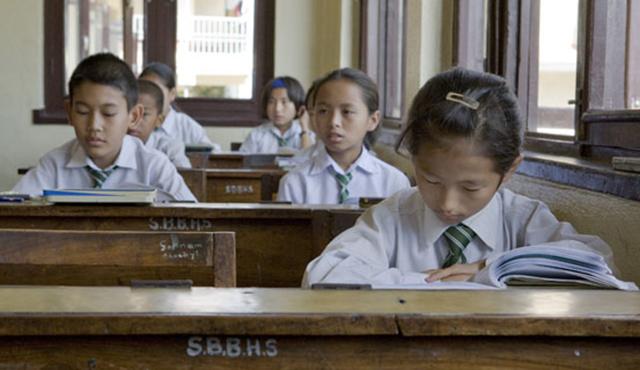To mark the end of a milestone year in global education, we are re-publishing our most popular blog post. This post was originally published on the Education for All Blog, on February 02, 2016, by Silvia Montoya and Jean-Marc Bernard. It announced two new initiatives that will be critical to monitor and achieve SDG 4: the UIS-led Global Alliance to Monitor Learning, and the Assessment for Learning initiative being developed through the Learning Metrics Task Force.

The successful achievement of the Sustainable Development Goals will depend in large part on our degree of success in delivering on Goal 4 on education.
Education is "a fundamental right and the basis for progress in every country," as United Nations Secretary-General Ban Ki-Moon has argued. And as the international community has come to recognize, the educational outcomes that can drive the progress we seek go beyond access to a classroom and depend on the quality of learning available once there. As a result, five of the 10 education targets of SDG 4 focus on learning skills and outcomes of children and adults.
Measuring learning in order to improve it
This focus on learning is exactly the right move—we need to set our sights on the improvement of learning outcomes for all children.
But how? As a starting place, we need robust data on who is and isn't learning and why — in other words, we need data on learning outcomes, disaggregated by gender and socioeconomic status, and other equity indicators, paired with data on the classroom environment, resources, and teaching methods so that actors in developing countries know what changes need to be made to improve learning most effectively.
Two new initiatives currently in the works will be critical to monitor and achieve SDG 4. To begin with, the UNESCO Institute for Statistics (UIS) is launching the Global Alliance to Monitor Learning (GAL), which will bring together national education authorities, assessment agencies, citizen-led initiatives and the international education community, including donors. The central objective is to ensure that countries have the high-quality data needed to improve the learning outcomes of all and to track progress globally.
A global set of learning metrics that countries can use
Working with all key stakeholders, the Alliance will find the most cost-effective way to link the different assessment initiatives already underway in order to develop a set of global metrics that can be used to monitor progress across countries. To this end, its first priority will be to develop an internationally-comparable measure of reading and mathematics to monitor learning outcomes at the end of primary and lower secondary education.
It will also develop a common framework for data assessment quality, building on the World Bank's SABER (Systems Approach for Better Education Results) framework, for the use of all countries, while expanding UIS's Catalogue of Learning Assessments in order to help countries make informed decisions about their assessments.
In addition, the GAL will play an important role in advocating at the global level both for the prioritization of learning outcomes data collection and use on the part of countries, and the adequate investment in data to monitor SDG4 on the part of the international community.
Building national capacity for monitoring and improving learning
A potential source of support for the GAL is the Assessment for Learning (A4L) initiative being developed through the Learning Metrics Task Force. A4L is a proposed international platform to support national learning assessment systems that aim to improve learning assessment at both national and global levels.
A4L will channel financial and technical assistance to developing countries in order to improve learning and equity outcomes through a strong focus on sustainable capacity-building at a system level.
Through a diagnostic and strengthening of the alignment among all components of a country's learning assessment system, including effective data analysis and policy use, A4L will ensure that these systems can close the feedback loop to the rest of the education system to achieve meaningful improvement in learning.
Identifying tools and standards that countries can use
In the process of equipping national governments to carry out quality learning assessments, A4L could support the use of standards at country level as they will be defined by GAL.
Through its efforts to strengthen the assessment of learning outcomes worldwide, particularly the development of new learning assessment tools, A4L could also directly support GAL.
Together, these two initiatives could increase the quantity and quality of learning data available, not only for governments to improve learning, but also to support GAL's efforts to monitor SDG 4 at the global level.
Global support will empower countries to improve learning
In the evolving landscape of education for sustainable development, it is critical that the architecture of support for the improvement of learning outcomes be innovated and adapted.
This will empower developing countries to reliably keep their finger on the pulse of their education systems: to monitor and analyze what's working and what isn't, and how they can improve learning in an effective and equitable fashion.
By making the necessary investments in coordinated, strategic initiatives such as GAL and A4L, we can build the kind of infrastructure we need to achieve inclusive and equitable quality education for all.
More top posts by Silvia Montoya from the Education for All blog
Where are the most marginalized girls on International Women’s Day? Not in school
How to track education financial flows (with Suzanne Grant-Lewis)
Leave a comment